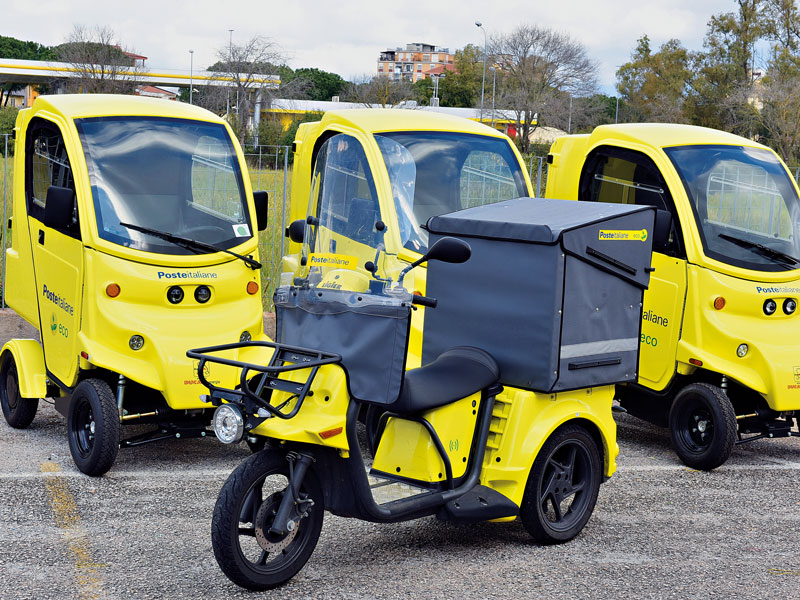
Despite postal services being essential for bridging the gaps between individuals, organisations, and governments around the world, the sector is currently facing its biggest obstacles yet: climate change and digital disruption. The sector, which possesses all the qualifications needed to tackle these challenges, needs to innovate, and become more sustainable to ensure it continues to compete and boost the world economy. The pandemic, the geopolitical instability caused by the war between Russia and Ukraine and soaring energy prices are causing companies to re-evaluate their existing corporate strategies and adopt more innovative, sustainable, and resilient business models.
To address the current crises and anticipate future ones, at Poste Italiane, we believe the postal sector needs a ‘green transition,’ where it implements strategies that emphasise digitalisation and follow a ‘platform’ model. This could involve a move towards a more inclusive business, where companies provide services and products capable of responding to the needs and interests of citizens everywhere. It is imperative to the success of this approach that companies combine their business plans with ambitious ESG goals. Both will add value and produce positive economic, environmental, and socially beneficial outcomes.
The green transition
As part of the journey towards the green transition, we need to integrate environmental concerns into company strategy and set clear objectives. The postal service relies heavily on shipping, which is carbon intensive. Around 940 million tonnes of CO2 are emitted by shipping each year, which accounts for approximately three percent of global greenhouse gas (GHG) emissions. Without intervention, the European Commission predicts that within a few decades, shipping might account for 10–13 percent of world emissions.
In addition, according to the World Economic Forum, the energy shift in the shipping sector has created an investment opportunity of $1trn–$1.4trn. In this regard, in line with the Paris Agreement, the recent 2021 Glasgow Climate Pact, and the European Green Deal, Poste Italiane has published an ambitious roadmap, aiming to achieve a 30 percent reduction in total CO2 emissions by 2025 and carbon neutrality by 2030.
A responsible and resilient model
There are numerous responsible and resilient initiatives that the postal sector can adopt to minimise their environmental impact and energy consumption. Companies should commit to a corporate fleet renewal plan, a path that envisions the complete replacement of the entire vehicle fleet with next-generation electric, hybrid and endothermic low-emission models. Poste Italiane, for example, aims to replace the entire corporate fleet with 27,800 next-generation green vehicles with reduced environmental impact, achieving a 40 percent reduction in emissions.

Green initiatives don’t need to be drastic to make a significant difference. An open goal for reducing emissions would be to ensure that the electricity powering company real estate comes from 100 percent renewable sources. Poste Italiane is coordinating more than 90 energy efficiency projects across Italy, including the use of photovoltaic panels on its own buildings throughout the country, which will not only have a noticeable impact on our carbon emissions, but reduce our long-term business expenses through a cheaper, sustainable energy supply.
One thing is certain: the postal sector is being positively disrupted by technological innovation, which is driving major growth in the market. Postal services need to accelerate the digitalisation of their products in order to remain competitive in an increasingly crowded market. With a history going back more than 150 years, Poste Italiane deftly brings traditional postal services to the cutting edge of digitalisation, through innovation and partnerships in the financial and insurance services as well as mobile communications.
According to the International Post Corporation (IPC), over 50 percent of users are willing to accept slower deliveries for less polluting alternatives, as consumers become increasingly aware of the environmental impact of delivery. According to the Green Postal Day, in response to the growing consumer demand for solutions with a low environmental impact, post offices are collectively aiming for a minimum of 50 percent of their fleet to be powered by alternative fuel vehicles (compared to 22 percent in 2020). In addition, post offices have reduced their yearly carbon emissions by over 30 percent as well as their electricity use by 30 percent


